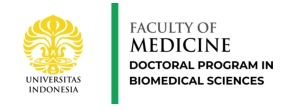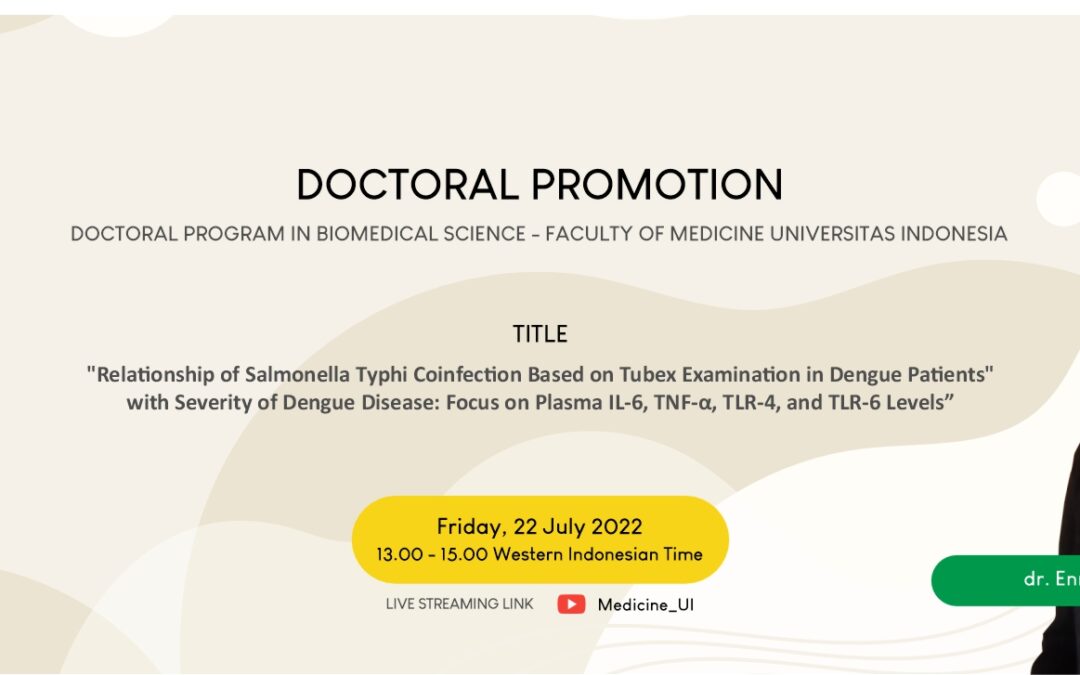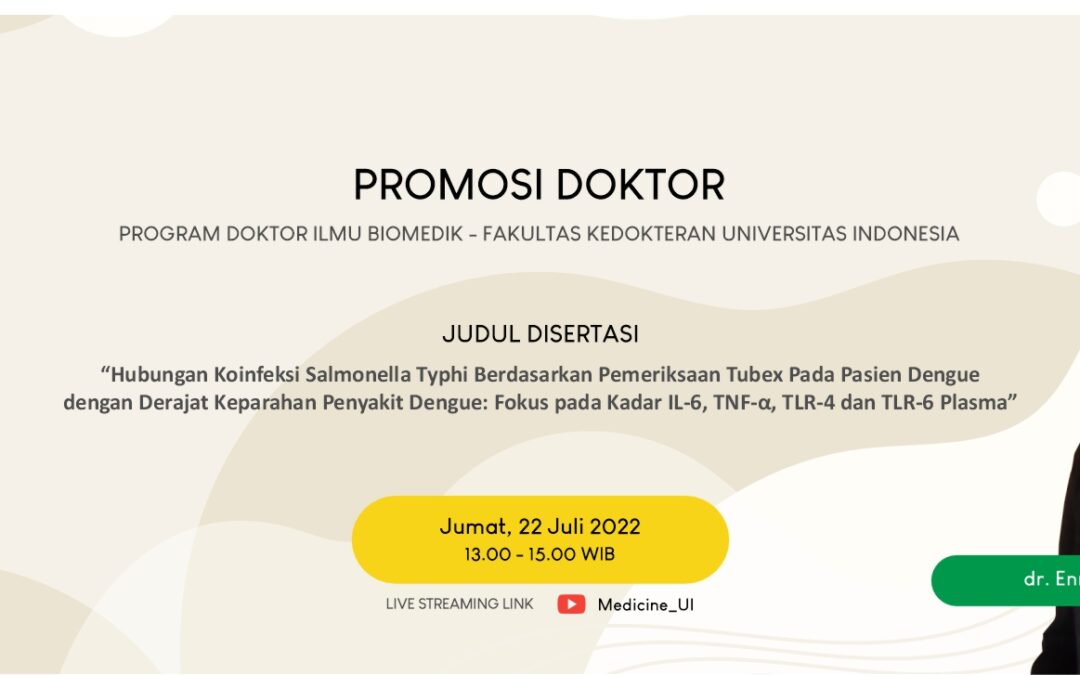Opportunities for Development of Diagnostic Kits as Predictors of Dengue Virus Infection Severity
By: Dr. dr. Enny Nugraheni, M.Biomed
DHF is an infectious disease that is still a problem in the world and also in Indonesia. Based on the 2020 Indonesia Health Profile report from the Director General of P2P of the Indonesian Ministry of Health, the DENV morbidity rate in Indonesia in 2020 is 40 in 100,000 population with a mortality rate of 0.7%. DHF is an infection with the dengue virus (DENV) that infects humans through the Aedes Aegypti mosquito.
In addition to DENV, infections caused by other microorganisms in Indonesia are still high, so the occurrence of concurrent infections is possible. In this study, the determination of infection with other microorganisms, namely Salmonella typhi, was carried out using the tubex test. This concurrent infection can make it difficult to establish the relevant diagnosis and treatment of the cause of the disease. So this can increase pain, length of stay, and also financing. So it needs knowledge and steps to prevent this and detection innovations to predict it.
The severity of DENV infection is characterized by plasma leakage caused by a storm of cytokines including TNF-alpha and IL-6. This will make the patient fall into a state of shock and cause death. In addition, the severity can be caused by the presence of other microorganism infections that occur simultaneously with DENV infection. TLR-4 and TLR-6 are receptors that can be activated by several microorganisms so that the presence of infection caused by other microorganisms in DENV patients can be confirmed by an increase in TLR-4 and TLR-6.
Some of the markers examined in this study were cytokines (TNF-alpha and IL-6) and receptor markers (TLR-4 and TLR-6). DHF examination was diagnosed by RT-PCR. Examination of TNF-α, IL-6, TLR-4, TLR-6, and NS1 using ELISA.
The subjects in this study were adults who underwent blood sampling, physical examination, and hematological examination as well as cytokines and TLR. Dengue infection was confirmed by NS1 and/or RT-PCR and for cytokine and hematology examination using the ELISA method. Then the data are grouped and analyzed using statistical tests that
in accordance.
Of the subjects who met the research, criteria were 63 people. The cases of mono-infection and coinfection were 24 subjects and 39 subjects respectively. The levels of IL-6, TLR-4, and TLR-6 in the monoinfected and coinfected groups showed significant differences. Whereas based on DD and DHF groups, the levels of TNF- and IL-6 there were significant differences.
It can be concluded that dengue infection together with Salmonella typhi infection in this study may indicate an increase in plasma IL-6, TLR-4, and TLR-6, whereas if viewed from the severity of the disease TNF-α and IL-6 indicate a more severe degree of disease severity. So that the measurement of IL-6, TLR-4, and TLR-6 can be used as candidate diagnostic kits as a predictor of the severity of DENV coinfection with Salmonella typhi. While the diagnostic kit candidate for severity
Promoter Team :
Prof. dr. Agus Syahrurachman, Sp.MK, PhD
Dra. Beti Ernawati Dewi, PhD,
Dr. dr. Leonard Nainggolan, Sp.PD-KPTI, FINASIM
Examiner Team :
dr. Tjahjani Mirawati Sudiro, PhD
dr. Alida Harahap, Sp.PK, PhD
Dr. Drs. Heri Wibowo, MS
Prof. dr. Muhamad Hussein Gasem, Sp.PD-KPTI, FINASIM


